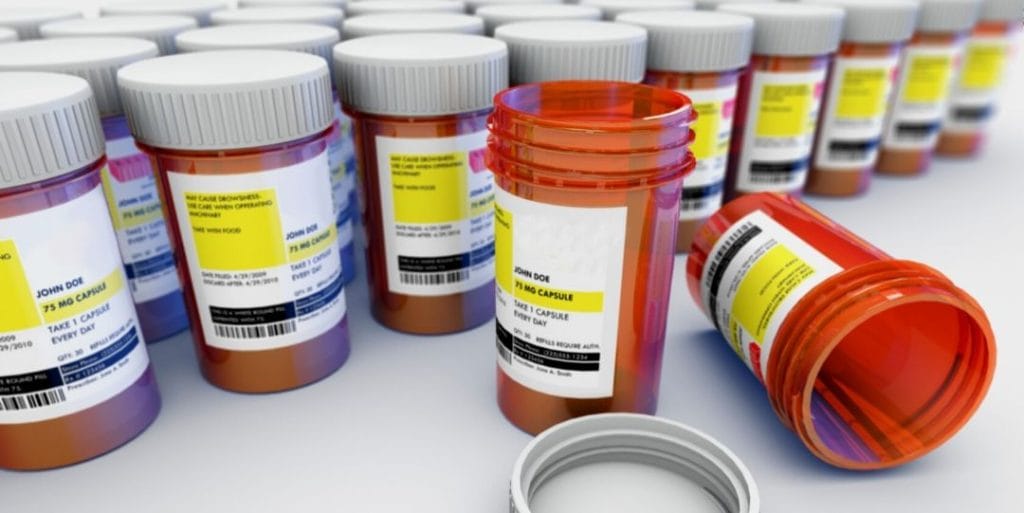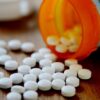The 8 most important factors to consider when deciding whether to try Erectile Dysfunction (ED) drugs
An estimated 30 million men in the United States are thought to suffer from erectile dysfunction (ED), which occurs when a man is unable to achieve — and sustain — the kind of erect penis needed for successful sexual intercourse. Worldwide an estimated 152 million men had ED in 1995, with that number expected to increase to 322 million by 2025, according to a Boston University study.
While many men try to remedy their ED with such blockbuster drugs as Viagra and Cialis, not all men are good candidates for these drugs due to health problems like prior heart attacks, diabetes, liver or kidney problems. Other candidates may be more susceptible to the drugs’ side effects, which can include sudden blindness or vision loss, painful erections, headaches, dizziness, or muscle or back pain.
Below you’ll find the 8 most important factors to consider when deciding whether to try ED drugs. You can also look at our companion ED Drug Comparison Chart.
What causes Erectile Dysfunction?
When erect the penis typically fills with roughly 20 times as much blood as normal and it becomes both larger and harder — unless some factor (or combination of factors) short-circuits the process.
Age alone won’t cause ED, although it does become more prevalent as men grow older and as many as half of men between 40 and 70 have either passing or chronic ED. More commonly ED is caused by what is now known to be a long list of medical, psychological and lifestyle factors such as vascular disease (which accounts for about 40% of cases in men 50 and older), diabetes (which may account for another 30% of cases), prostate surgery, high blood pressure, thyroid problems, obesity, smoking, high cholesterol levels, high lipid levels, multiple sclerosis, depression, performance anxiety, and too much alcohol.
ED may also be caused by certain over-the-counter drugs like antihistamines and heartburn medications, as well as prescription drugs like those for treating high blood pressure, depression, anxiety, cancer, and epilepsy. Contrary to what many consumers think, only 3% to 6% of all cases appear to be due to a hormone problem, such as a low level of testosterone, and men who have low testosterone can still have erections.
Treating Erectile Dysfunction
Because ED can have so many causes, treating it effectively often requires medical supervision, as well as the time and patience to try different approaches, if necessary.
“There is such variability to ED,” said urologist Kevin Campbell, MD, the director of the Men’s Sexual Health Clinic, which is part of the Cincinnati, Ohio-based Urology Group. “You might get a 45-year-old man who tells you he doesn’t get erections like he used to, or maybe a 65-year-old diabetic who hasn’t had an erection in five years, but who’s now in a relationship.”
“It depends on the situation,” he added. “If you’re a guy who had radical prostate surgery and there is nerve damage, I don’t feel the need to try all the medications.”
Consumers now spend an estimated $4 to $5 billion a year on erectile dysfunction drugs that are most often taken by mouth, injected into the penis, or used as a penile suppository. (That number is expected to decline with the use of generic versions of ED drugs.) In 1998, Viagra became the first oral drug to win the approval of the FDA, and since then the famous “little blue pill” has been followed by other drugs that claim to offer new benefits, whether it’s producing erections faster and with fewer side effects, or allowing a drug to remain active for a longer period of time, as well be taken more conveniently and discreetly.
Erectile Dysfunction Drugs Market Size, Share & Trends | Industry Analysis Report, 2026

Image courtesy Transparency Market Research
Some drugmakers are continuing the push to try to make certain ED drugs available without a prescription. While past efforts to make Viagra available over the counter failed because of objection from regulators, Sanofi, the French drug company, has acquired the rights to seek approval for selling Cialis without a prescription. However, an over-the-counter version has not yet been approved. Several versions of Cialis’ generic, tadalafil, have been approved since 2018 (but still requires a prescription).
Here are 8 things you need to know before taking any erectile dysfunction drug:
1. Medical problems and lifestyle issues need to be addressed first
ED is often a sign of far more serious health problems, so physicians say it should be treated first by addressing issues like diabetes, high blood pressure and heart disease.
In many cases, lifestyle changes can make a big difference. In one study, researchers found that men who had type 2 diabetes but who adhered most closely to the so-called Mediterranean diet (high in foods like fruits, vegetables, olive oil, nuts and fish) had the lowest incidence of ED.
Smoking is an independent risk factor for ED according to multiple studies. In a study of nearly 17,000 men published in the journal European Urology, those who smoked more than 10 cigarettes per day were 40% more likely to experience ED compared to those who never smoked. Even former smokers didn’t escape the risk–they were 30% more likely to experience ED.
And since ED often has psychological components, it makes sense that studies sometimes show greater improvements in men taking a placebo than in those taking the study drug. A 2020 meta-analysis published in JAMA Network Open reviewed placebo responses in 63 studies using oral medications for ED. The studies, which included more than 12,000 men, showed that erectile function was significantly improved in men taking a placebo, particularly in those with ED associated with post-traumatic stress disorder caused by traumatic experiences. These results reinforce the recommendation for counseling in men who may be experiencing ED due to psychological stress.
Other lifestyle factors such as excessive alcohol use, lack of physical activity and obesity may also need to be addressed in men with ED.
Prominent medical groups like the American Academy of Family Physicians and American Urological Association (AUA) recommend that men who still have ED after addressing medical and lifestyle issues first consider taking drugs like Viagra and Cialis before moving to more invasive procedures like penis injections, penis pumps, implants and vascular surgery.
2. Some drugs you are on can cause erectile dysfunction
Talk to your doctor. Some OTC and prescription medicines can cause ED. Medicines that can cause ED include antidepressants, antihistamines, anti-anxiety drugs, diuretics, high blood pressure drugs, antiarrhythmics, muscle relaxants, prostate and chemotherapy drugs, some NSAIDs (nonsteroidal anti-inflammatory drugs), some antacid and heartburn drugs and Parkinson’s drugs. (See MedShadow’s 5 Common Medications That Can Cause Erectile Dysfunction)
In addition, two drugs that are used to treat hair loss and enlarged prostate may cause ED that can last for years after the drug is stopped. Researchers at Northwestern University Feinberg School of Medicine examined the medical records of nearly 12,000 men who had taken either Avodart (dutasteride) or Propecia/Proscar (finasteride). Higher doses are used to treat an enlarged prostate that results in more frequent urination, while smaller doses are used for hair loss.
About 1.4% of the men developed long-term erectile dysfunction (ED) after taking one of the drugs. While that’s a relatively small percentage, those who did experience ED had it last an average of 3.5 years after they stopped taking the drug.
Results also showed that young men (aged 16 to 42) who took Propecia or Proscar for at least 205 days had a nearly five times higher risk of persistent ED than men with shorter exposure. And men without prostate disease who used an NSAID painkiller (such as Advil or Aleve) with at least 209 days of use of one of the two drugs had a 4.8-fold higher risk of persistent ED than men with shorter exposure. Overall, the longer a man took one of the drugs, the more likely he was to develop an ED problem.
Questions about sexual – and other – side effects have plagued Propecia since its approval, as there have also been cases of suicidal thoughts and depression associated with the drug. (See MedShadow’s Propecia: Hair Growth for Most, Impotence – & Worse – for Some
3. Erectile dysfunction drugs are effective
Oral drugs
The most commonly used ED medications belong to a group of drugs called phosphodiesterase inhibitors (PDE-5) because they turn off an enzyme that blocks the formation of an erection. So far, the FDA has approved five such drugs: Viagra (sildenafil), Cialis (tadalafil), Levitra (vardenafil), Stendra (avanafil), and Staxyn (a rapidly dissolving form of Levitra that is placed on the tongue).
As a group, PDE-5 inhibitors allow about seven out of every 10 men to have successful intercourse, although they may work less well in some men who have diabetes and who have recently had radical prostatectomy, when the entire prostate gland is surgically removed, often because of cancer.
Side effects with the drugs are usually mild to moderate. Because they basically work the same way, they’re usually prescribed on the basis of their convenience, cost, side-effect profiles, and the often strong personal preferences that men develop for certain drugs. Some men, for example, claim in online reviews that Viagra appears to kick in faster and produce a firmer erection than Cialis, even though it is effective in the body for only about four hours (versus 36 hours for the “weekender” version of Cialis). In general, all PDE-5 drugs, in order to work, require that a man also be sexually stimulated.
Penile injections
According to the AUA, intracavernosal penile injections can be an effective way to treat ED in men for whom PDE-5 drugs are not an option, such as men with diabetes or cardiovascular disease (CVD) or risk factors for CVD, or those with nerve damage from a prostatectomy spinal cord injuries. Men who find that PDE-5 drugs are inadequate or ineffective may choose the injections, even though the procedure is invasive (it requires that a man self-inject a needle into the side of his penis) and also carries a higher risk for priapism, a rare, but potentially serious medical condition associated with erections that last four hours or more.
The injections usually contain alprostadil, a powerful vasodilator. Alprostadil is either used alone (in products like Caverject and Edex) or mixed with medications like papaverine and phentolamine (in so-called tri-mix and bi-mix combinations) to increase both the efficacy of the injection and decrease penile pain. Urologists often turn to specialty pharmacies to custom-make tri-mix and bi-mix formulations for their patients.
The injections have drawbacks. For one, men often need to be taught how to do them correctly, to minimize bruising and pain. It can also take six or more injections before the right dosage is found. Most men, however, see a reaction in about five minutes, and erections typically last about an hour.
In Cincinnati, Dr. Campbell likes to recommend penile injections because he’s found they’re about 80% effective for treating ED. He’s also discovered that a tri-mix injection can cost his patients as little as $5 per injection.
Penile suppositories
Alprostadil also comes in the form of a penile suppository, MUSE (Medicated Urethral System for Erections), that is about the size of a grain of rice. Using a special applicator, a man typically slips MUSE about an inch into his urethra before he wants to have sex; erections typically occur within 5 to 10 minutes and last for 30 to 60 minutes. In clinical trials, the drug was found to help about 65% of men have intercourse compared to about 19% of the men who were taking a placebo. Some physicians, however, say it is both expensive and effective only 20 to 40% of the time at creating an erection hard enough to allow for sex. Still, unlike PDE-5 inhibitors, MUSE can be used by men who are taking nitrate-based drugs, and it’s often effective for men who have severe vascular disease, diabetes, as well as those who have undergone prostate surgery.
Testosterone replacement therapy
Boosting testosterone doesn’t always amp up erections. Still, for the small number of men who have ED because of low testosterone, testosterone patches, gels and, increasingly, longer-acting testosterone pellets have been shown to help.
Testosterone levels naturally decline as men age. A study in the New England Journal of Medicine determined that testosterone gel may improve sexual function in older men. Men in the study were aged 65 or older and had low testosterone levels and decreased libido. Researchers gave them either a testosterone gel or placebo gel to use for a year. Compared to men using the placebo, men using testosterone experienced increases in sexual desire and erectile function.
Penile creams
So far, a penile cream for treating ED has been approved for use in Canada, Europe, Mexico and other countries outside the U.S. The cream, Vitaros, also contains the vasodilator alprostadil, but it’s applied with a special, disposable applicator to the tip of the penis five to 30 minutes before a man wants to have sex.
Unlike the PDE-5 inhibitors, Vitaros isn’t swallowed so it may eventually prove to have fewer side effects. Some men, however, report a burning sensation in the penis when they use it, and women may experience mild vaginal burning, itching or vaginitis. It should not be used with anyone who is pregnant, breastfeeding, or considering pregnancy. Men who take it also need to avoid driving or using machinery for up to two hours afterward because of the risk of dizziness and fainting. Still, studies have already shown that the cream appears to be both well-tolerated and helps improve erections in men who have medical conditions like diabetes and cardiovascular disease.
4. Side effects are often minimal but some men need to avoid the drugs entirely
As anyone who’s ever watched the ads already knows, ED medications often appear to come with a long list of side effects, some of them are frightening, like the potential for sudden loss of hearing or blindness.
In general, ED drugs like Viagra and Cialis carry minimal to moderate side effects, and the medications can often be used safely, even in men who have cardiovascular problems, say physicians like Dr. Campbell. “The number of people who can’t take ED drugs because of side effects is less than 5%, usually in the range of 2% to 3%,” he said.
For drugs like Viagra, Levitra and Cialis, the most common side effects are headaches, heartburn, facial flushing, and a stuffy or running nose. Many Cialis users, on the other hand, complain about back and leg pain. According to Lilly, the company that makes Cialis, men who get back pain and muscle aches with Cialis usually get it 12 to 24 hours after taking the drug, and the pain typically stops within 48 hours.
Still, some men need to take PDE-5 drugs with caution and under medical supervision, or avoid them entirely. They should be avoided by anyone who is taking nitrate-based medicines, like those used to treat angina (chest pain) or found in street drugs called “poppers” because the combination can lead to dangerously low blood pressure. While the drugs do not appear to lead to a much higher risk of heart attacks, they’re typically prescribed with caution — or avoided entirely — in men who have severe heart disease, high or low blood pressure, or who have had a heart attack or stroke within the last six months. (A study presented at a 2017 meeting of the American College of Cardiology determined that men who took a PDE5 drug in the years following their first heart attack were 38% less likely to die from any cause over the three years following the event.) Men who have reduced liver function, or kidney problems, or who require dialysis also need to be careful.
When it comes to sudden vision loss, the concern with drugs like Viagra and Cialis has been that they may double the risk of developing a rare, but potentially serious eye condition called non-arteritic anterior ischemic optic neuropathy (NAION), which can cause permanent vision loss.
The incidence of NAION is now quite low: between 2.5 and 11.8 cases a year for every 100,000 men 50 or over. The condition has been linked to factors like hypertension, diabetes, smoking and sleep apnea, as well as an anatomical problem with the optic nerve usually referred to as a “crowded” optic disc. It’s still not clear whether the higher incidence of NAION among men who take ED drugs is due to the drugs themselves, or to the many medical problems that often cause ED.
A 2014 JAMA Internal Medicine study found a link between Viagra and a higher risk of melanoma, a deadly skin cancer. The publication of that study prompted the FDA to put Viagra and other PDE5 inhibitors such as Cialis (tadalafil) and Levitra (vardenafil) on a watch list of drugs with potential safety issues.
But according to a large meta-analysis that looked at more than 866,000 men that had taken the medications, these drugs do not increase the risk of developing melanoma. The report, published in 2017 in the Journal of the National Cancer Institute, is significant in that it came to a different conclusion than the earlier study. The meta-analysis examined five large clinical trials of men that took a PDE5 inhibitor and melanoma risk. Researchers did find that men who took an ED drug had an 11% higher risk of developing melanoma, but they also found the men who took large amounts of ED drugs had no significant increase in melanoma risk, while men with little exposure to them had an elevated risk.
As to why this is the case, researchers attribute the increased risk in some PDE5 users to what is known as “detection bias.” This means that some of the men who took PDE5 inhibitors are more health conscious and more likely to see their physician, and therefore more likely to get diagnosed with melanoma. “Overall, Viagra and other PDE5 inhibitors are safe medications as long as men are not taking nitrates, which carry a risk of reducing blood pressure,” lead author Stacy Loeb, MD, a urologist at NYU Langone Medical Center, said in a statement. “Physicians and patients should not be concerned about taking these medications on account of worry about melanoma.”
5. Compliance can be a big hurdle
Men often have a hard time complying with a plan to take erectile dysfunction drugs; sometimes the problem is the effectiveness of the drug itself, but it can also be a matter of unrealistic expectations or a need for more spontaneity. Some research suggests that as many as 40% of men switch at least once between oral drugs like Viagra and Cialis, and between 30% and 60% eventually opt out entirely.
Compliance can also be a problem with penile injections, even though the needles themselves are very small, said Dr. Campbell. “If you look at patients a year later, only about 50% of patients are still doing it,” he said. “Men get frustrated with the lack of spontaneity, and sometimes they get a pain in their penis.”
6. Watch for drug interactions
As with other medications, ED drugs can affect the action of other drugs and vice versa, and the combination can worsen side effects. With PDE-5 drugs like Cialis, for example, tell your doctors if you are also taking nitrate-based drugs, alpha-blockers (like those used for high blood pressure and prostate problems), protease-inhibitor medicines for HIV infections, anti-fungal drugs, some types of antibiotics like erythromycin, clarithromycin or telithromycin, and others. As always, tell your doctor about all other prescription and over-the-counter medications, vitamins and nutritional supplements you take to avoid dangerous interactions.

7. Beware of imitators
Some of the most counterfeited drugs in the world are drugs like Viagra and Cialis, and regulators estimate that half of all ED drugs sold online may actually be bogus. In a study funded by Pfizer, maker of Viagra, researchers found that 77% of products purported to be Viagra were counterfeit. Sold by 22 different websites, the pills contained as little as 30% of the amount of active ingredient claimed on the label.
For that reason, it’s best to buy oral ED drugs from an accredited local pharmacy, or an accredited online pharmacy. To find an accredited online source, or to determine if a digital pharmacy is accredited, check the National Association of Boards of Pharmacy website.
Many Internet sites also claim to offer “dietary supplements” and “all natural” products for treating ED or otherwise boosting sexual potency. The supplements often appeal to men who want to avoid having to get a prescription from a doctor, or who think the products are safer than conventional drugs, especially if they have medical problems like heart disease or diabetes. But according to the FDA hidden ingredients are increasingly becoming a problem in products promoted for ED and sexual enhancement.
In a study published in JAMA Network Open, researchers analyzed all FDA warnings on supplements marketed for ED that may pose hazardous side effects because they carry powerful ingredients that aren’t listed on their labels. The researchers determined that 81.3% of adulterated ED supplements noted in FDA warnings were reported to contain Viagra or an analog of the drug, which would metabolize into the drug in the body. Other PDE-5 drugs were also found in the tainted supplements.
8. Some men prefer non-drug alternatives
When oral drugs and injections prove to be ineffective, men are often asked to consider alternatives like vacuum erection devices, penile implants, or vascular surgery. While some of the alternatives require surgery, many are highly effective.
Many men like vacuum erection devices, which are essentially hollow tubes placed over the penis and powered with a pump to draw air out, creating a vacuum and bringing blood in (a constriction ring is placed at the base of the penis to maintain the erection). The devices tend to be reliable, easy to use (some training is required first), and usually work between 80% and 90% of the time. Men who don’t like the devices often complain that they’re bulky and create erections that can feel wobbly at the base of the penis. The devices can’t be used by men on anticoagulant therapy, or those who have had bleeding disorders or a history of priapism. For better results, the devices are sometimes paired with PDE-5 drugs.
Penile implants also get high marks, and physicians report that as many as 9 out of every 10 men say they like the results. The implants now come in two forms: malleable implants that a man bends upward when he wants to have sex, and more-popular inflatable models that make use of a pump in the scrotum to draw fluid from an intra-abdominal reservoir into the rods of the implant inside the penis. While penile implants need to be surgically inserted, they have a low rate of mechanical failure, and cause infections after surgery only 1% to 2% of the time, according to Dr. Campbell.
Vascular surgery may be an option for young men with ED caused by a blockage in an artery to the penis due to pelvic fracture, prolonged bicycling or other trauma. The best candidates are men under age 30 without vascular disease or risk factors for vascular disease such as diabetes, high blood pressure or smoking. The surgery is meant to restore blood flow to the penis by bypassing the blocked artery with a healthy artery from the body. According to a study published in The Scientific World Journal, nearly 90% of patients who underwent penile micro-arterial bypass surgery reported satisfaction with the treatment and would recommend it to someone else.






